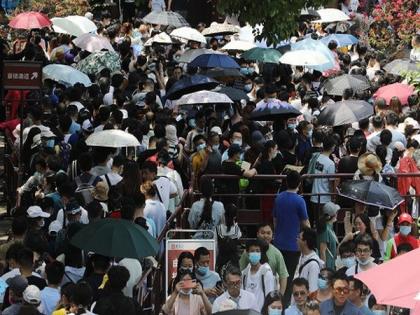China's population declined in 10 provincial-level regions in 2021
By ANI | Updated: May 8, 2022 21:30 IST2022-05-08T21:22:30+5:302022-05-08T21:30:13+5:30
Amid nationwide concerns, China's population of the 10 provincial-level regions have fallen in 2021, according to data released by the statistics authorities.

China's population declined in 10 provincial-level regions in 2021
Amid nationwide concerns, China's population of the 10 provincial-level regions have fallen in 2021, according to data released by the statistics authorities.
Global Times reported that Heilongjiang province lost 460,000 permanent residents compared with the previous year, the most significant decline nationwide. North China's Hebei and Shanxi and Northwest China's Gansu provinces each lost more than 100,000 people in the same period.
China's population reached 1.41 billion as of the end of 2021, up by 480,000 from the previous year, according to the National Bureau of Statistics (NBS).
However, the continuous decline in the number of marriage registrations in China has led to a decline in birth rates, as per reports, which added that it will eventually lead to the world's second-largest economy's demographic issue.
Last year, the number of marriages in China fell to a 36-year low, exacerbating the world's second-largest economy's demographic issue. As per the data, analysts predict this will contribute to the country's dropping birth rate.
According to the seventh nationwide census of 2020, China's population on the mainland has grown by 0.53 per cent annually on average in the past decade.
China's birthrate has been in decline since 2017, despite easing of the 'one-child policy' in order to avert an incoming demographic crisis.
Last year, Beijing issued a new Population and Family Planning Law that allows Chinese couples to have three children, ostensibly responding to couples' unwillingness to have additional children due to rising costs.
The decision to allow the third child was implemented after the once-in-a-decade census in 2020 showed that China's population expanded at the slowest rate in history, reaching 1.412 billion people.
According to census data, China's demographic issue is predicted to worsen as the over 60 years old increased by 18.7 per cent to 264 million people.
China's overall population has grown 5.8 per cent since 2000, from 1.27 billion to 1.34 billion, compared to a pace of 11.7 per cent, nearly twice, during the 1990 and 2000 censuses (Hvistendahl, 2011), The Singapore Post had reported.
( With inputs from ANI )
Disclaimer: This post has been auto-published from an agency feed without any modifications to the text and has not been reviewed by an editor
Open in app